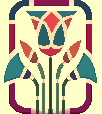
July 8, 2005 B
"Many Miles Away"
1:43pm
While Julia and I were off on our vacation day, seeing the treasures of King Tut, senseless acts of terrorism were happening
in London. The latest BBC article reports at least 50 people were killed and 700 injured in five separate attacks. I know from 9-11, how these attacks feel like an attack upon the whole nation, so my heart goes out to everyone living in England.
Does it seem too abrupt to just go back to more images from our trip? Perhaps a more fitting transition is needed. I don't know. I send strength and wisdom to all effected.
That said, here are more trip pictures. Rancho La Brea has the largest and most diverse assemblage of extinct Ice Age plants and animals in the world. Since 1906, more than one million fossil bones have been recovered representing over 231 species of vertebrates. In addition, 159 kinds of plants and 234 kinds of invertebrates have been identified.
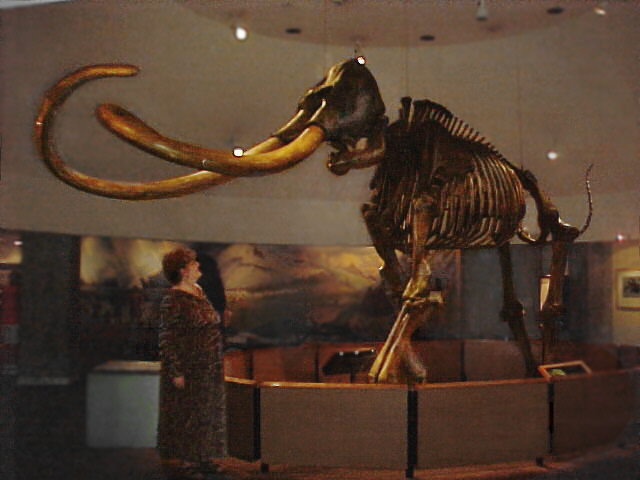
Julia looking at a giant mammoth skellie
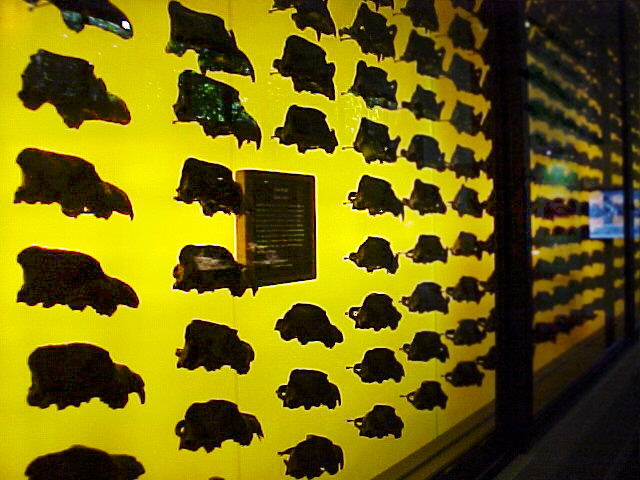 These 404 Dire Wolf skulls represent only a portion of the more than 1600 wolves whose remains have been found in the La Brea tar pits. It is thought that packs of Dire Wolves attempted to feed on animals trapped in the asphalt and became mired themselves.
These 404 Dire Wolf skulls represent only a portion of the more than 1600 wolves whose remains have been found in the La Brea tar pits. It is thought that packs of Dire Wolves attempted to feed on animals trapped in the asphalt and became mired themselves.
|
The museum had a display with pull poles to show just how sticky the tar is. Whatever falls in, isn't getting out without superhuman (superanimal) strength.
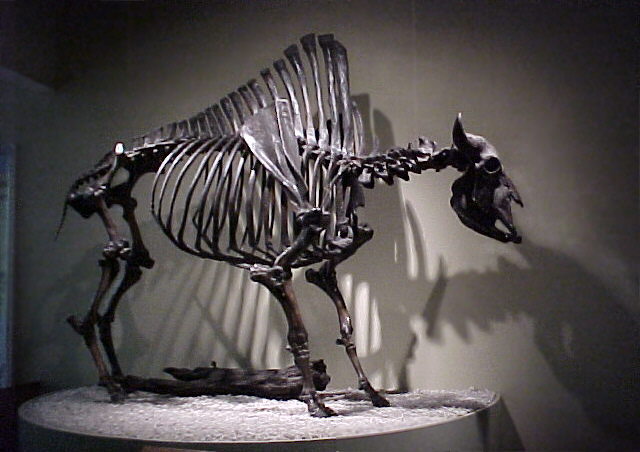 The Antique Bison is the most common plant eater found at Rancho La Brea. At least 159 of these animals have been retrieved. This extinct bison had a larger body, greater shoulder hump and longer horns than the modern buffalo.
The Antique Bison is the most common plant eater found at Rancho La Brea. At least 159 of these animals have been retrieved. This extinct bison had a larger body, greater shoulder hump and longer horns than the modern buffalo.
|
All kinds of critters fell into the tarry goo. Scarabs (aka Dung Beetles) were not immune:
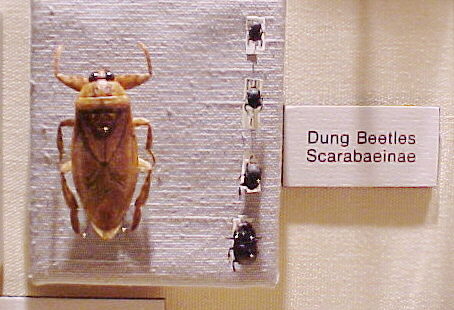
"Scarabaeinae"
Was the fossilized scarab like the ones in Ancient Egypt? There are over 20,000 species in the family Scarabaeidae, so it's at least a distant relative. Dung Beetles occur on all continents except Antarctica, for they don't like cold weather.
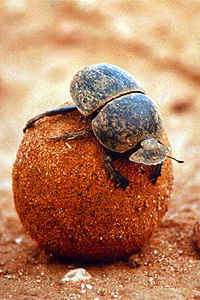
Busy beetle...
One species, Onthophagus gazella Fabricius, was introduced by USDA scientists in the 1970's because they are beneficial, thereby reducing the habitat for filth-breeding flies by eighty percent in some areas. Australians also found their fly problems were history when they imported 45 different species of dung beetles.
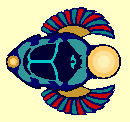
There aren't a whole lot of Egyptian items at LACMA. I did manage to photograph a few.
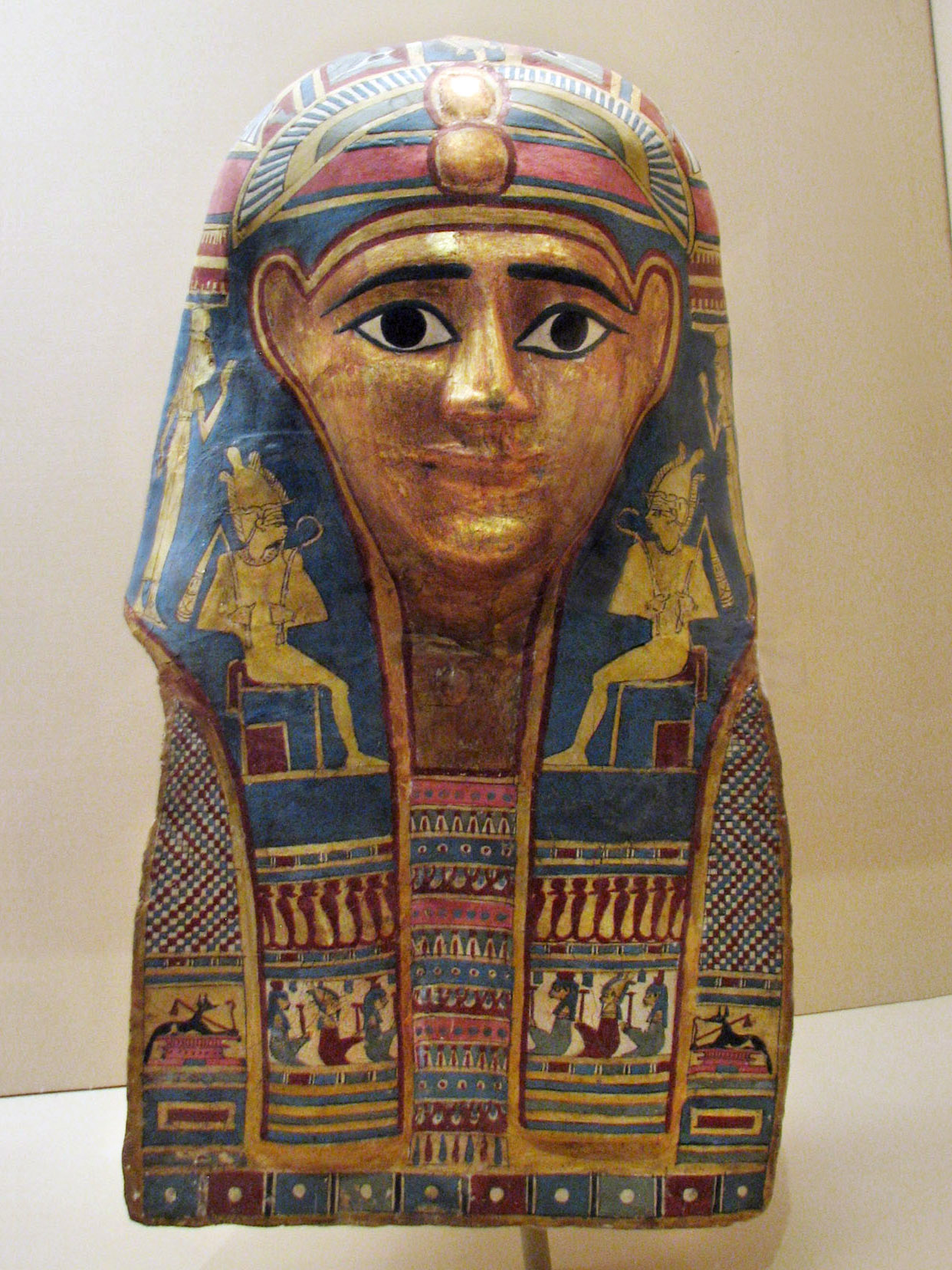
Mummy Mask of a Woman
Egypt, (Late 2nd-4th century A.D.)
Plaster, Gift of Mr. and Mrs. James Sanders, M.80.201.1
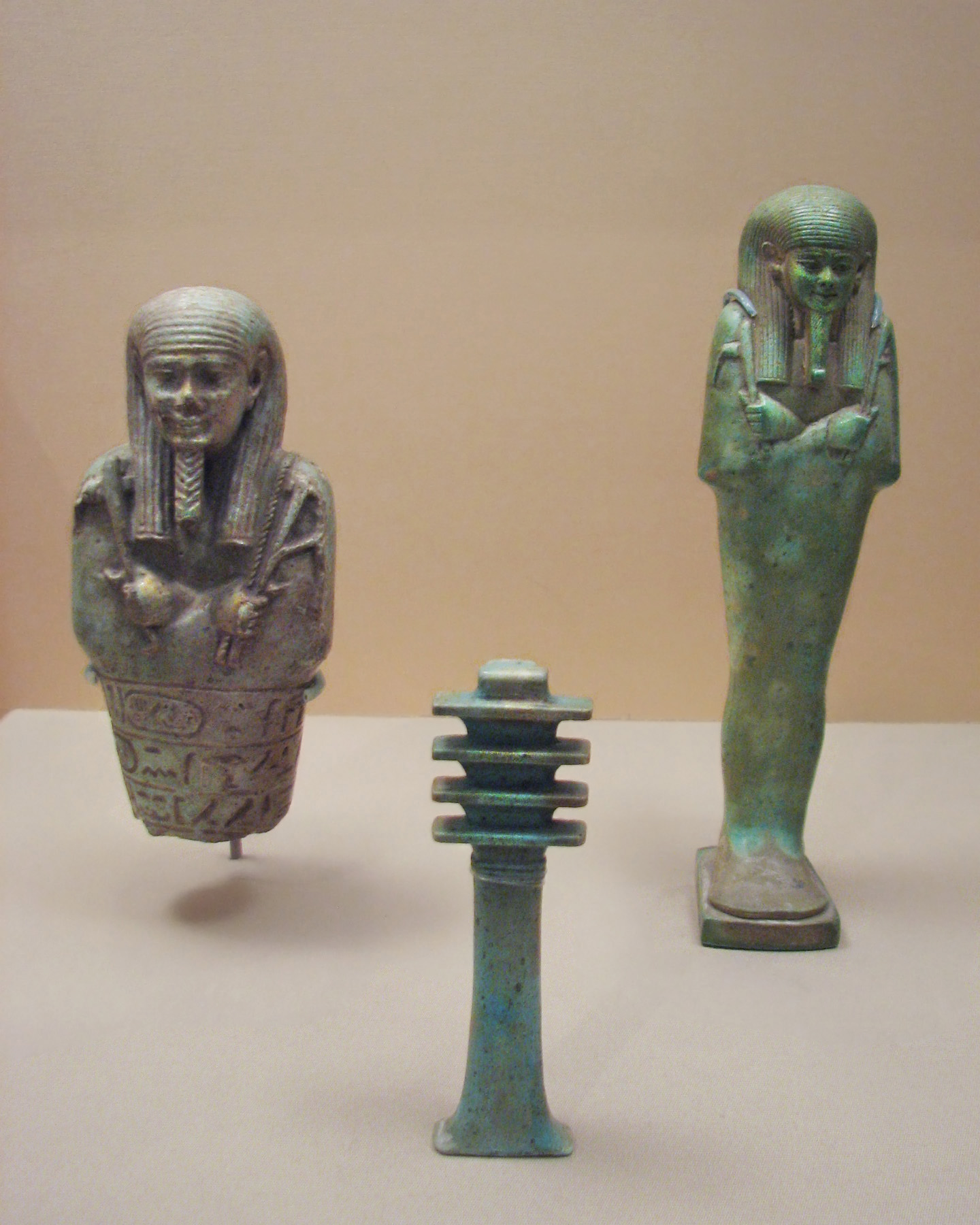
The item in the center is a djed pillar from the Late Period or Ptolemaic Period...
(These two photos actually from 2009 visit to LACMA, hence better quality!)
|








